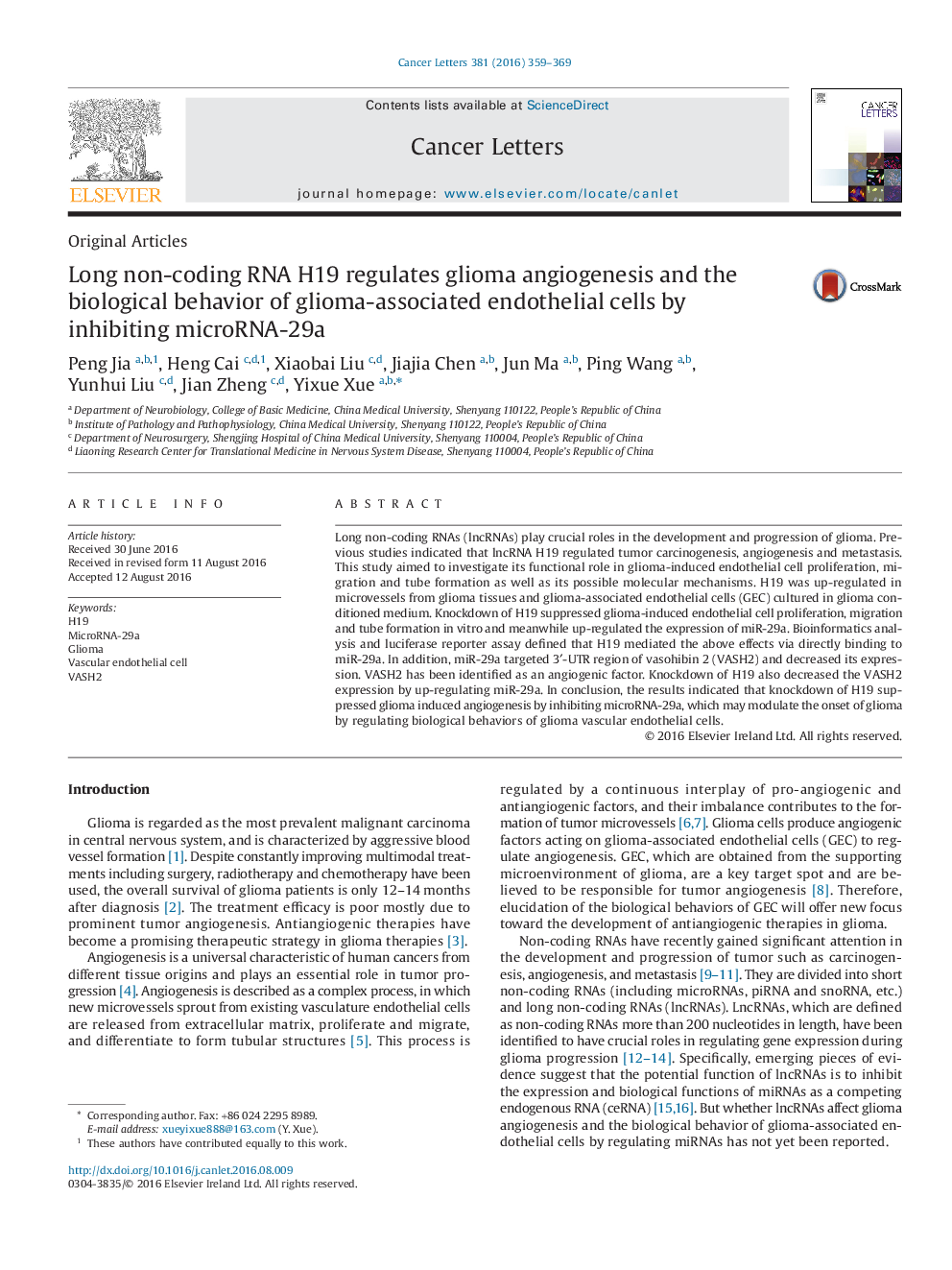| Article ID | Journal | Published Year | Pages | File Type |
|---|---|---|---|---|
| 2112231 | Cancer Letters | 2016 | 11 Pages |
•H19 was up-regulated in microvessels from glioma tissues and glioma-associated endothelial cells.•Knockdown of H19 suppresses glioma-induced angiogenesis in vitro by inhibiting miR-29a.•MiR-29a suppresses glioma-induced angiogenesis in vitro by suppressing expression of angiogenic gene VASH2.•H19 knockdown combined with miR-29a over-expression suppresses angiogenesis in vivo.
Long non-coding RNAs (lncRNAs) play crucial roles in the development and progression of glioma. Previous studies indicated that lncRNA H19 regulated tumor carcinogenesis, angiogenesis and metastasis. This study aimed to investigate its functional role in glioma-induced endothelial cell proliferation, migration and tube formation as well as its possible molecular mechanisms. H19 was up-regulated in microvessels from glioma tissues and glioma-associated endothelial cells (GEC) cultured in glioma conditioned medium. Knockdown of H19 suppressed glioma-induced endothelial cell proliferation, migration and tube formation in vitro and meanwhile up-regulated the expression of miR-29a. Bioinformatics analysis and luciferase reporter assay defined that H19 mediated the above effects via directly binding to miR-29a. In addition, miR-29a targeted 3′-UTR region of vasohibin 2 (VASH2) and decreased its expression. VASH2 has been identified as an angiogenic factor. Knockdown of H19 also decreased the VASH2 expression by up-regulating miR-29a. In conclusion, the results indicated that knockdown of H19 suppressed glioma induced angiogenesis by inhibiting microRNA-29a, which may modulate the onset of glioma by regulating biological behaviors of glioma vascular endothelial cells.
